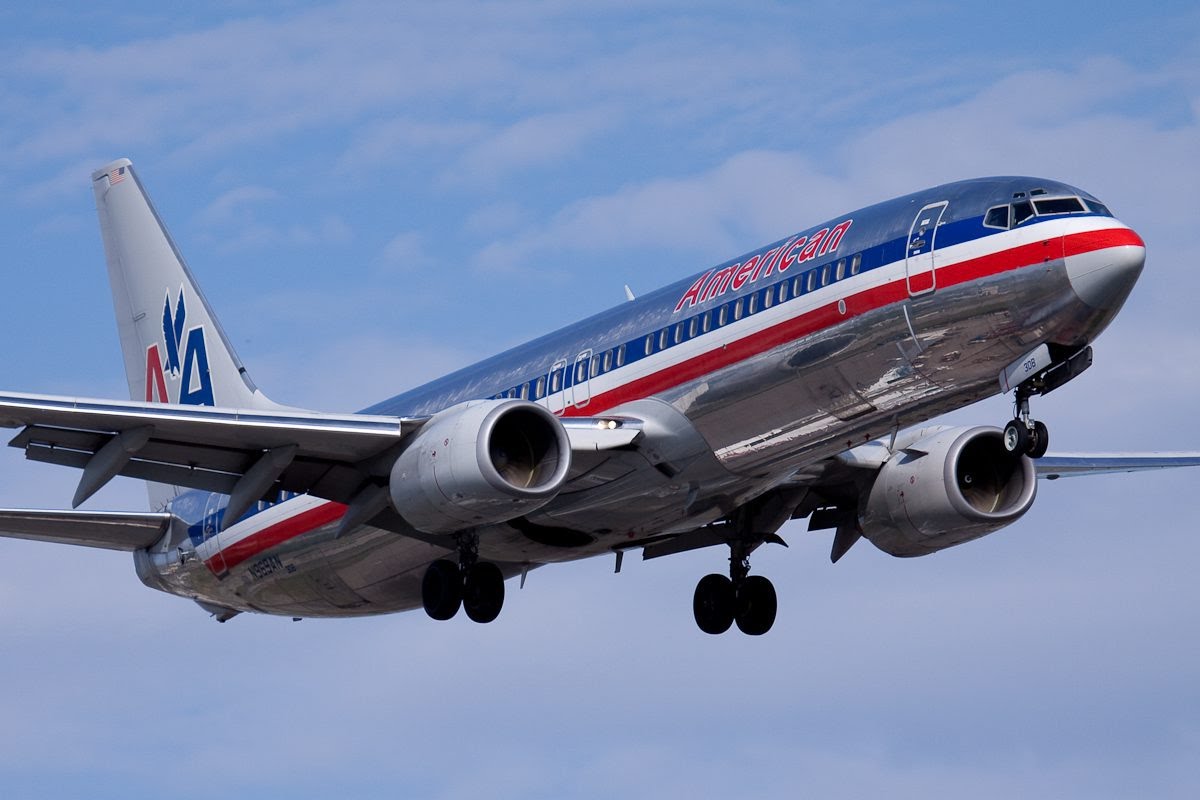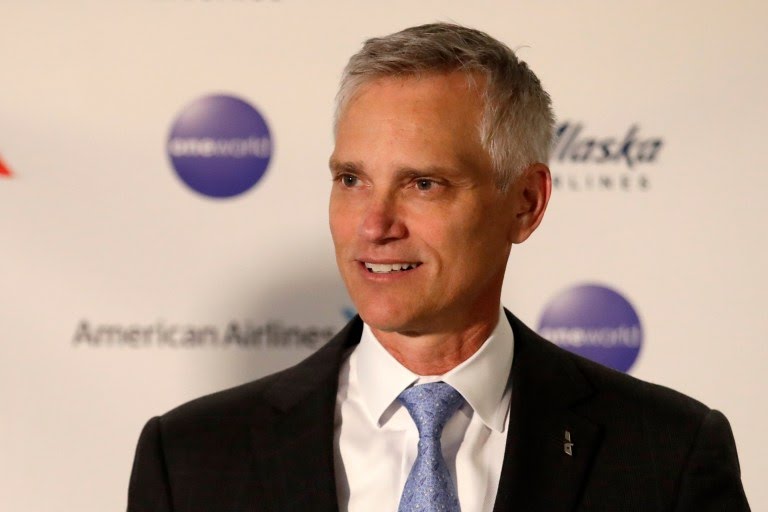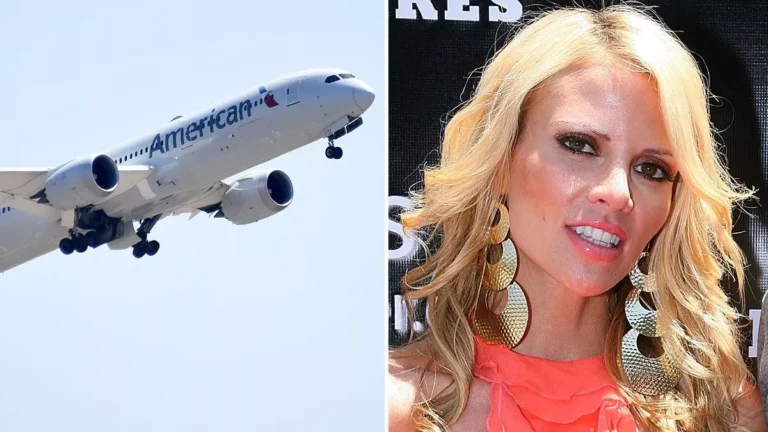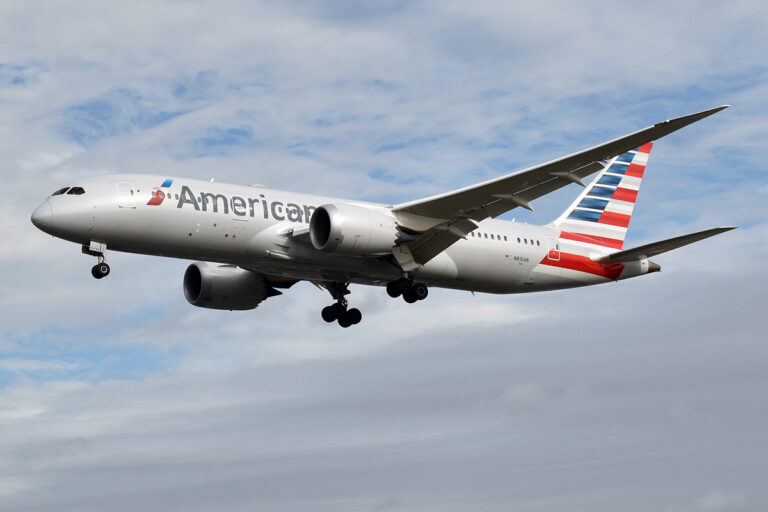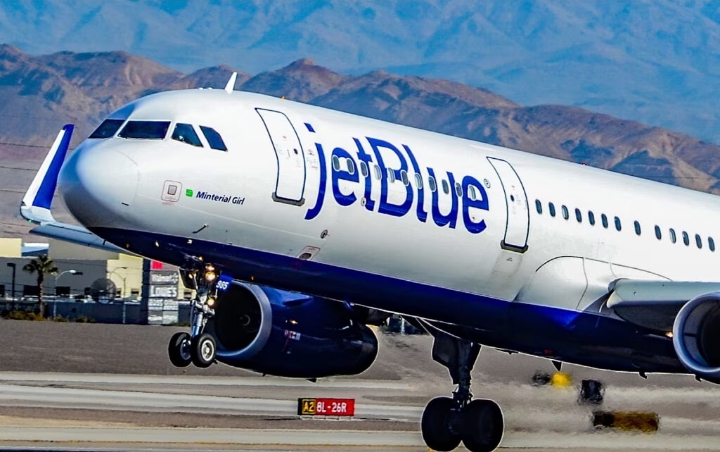American Airlines stock dives after profit outlook worsens in just one month
American said in late April it was about to beat Q2 expectations; United keeps guidance intactAmerican Airlines Group Inc. late Tuesday slashed its guidance for the current quarter, roughly one month after offering an upbeat take for the three-month period, which includes the height of summer air travel in the U.S.
The stock AAL dropped nearly 15% on Wednesday, on track for its lowest close since Nov. 2, when it closed at $11.40, and the largest one-day percentage decline in nearly four years.American said it expects it will report second-quarter adjusted earnings of about $1 to $1.15 a share. That compares with a late April guidance of adjusted EPS between $1.15 and $1.45 for the quarter.
The air carrier did not detail a reason for the lowered guidance. FactSet consensus calls for adjusted earnings of $1.30 a share.
BofA Securities analysts said that American’s April guidance had been “aggressive” to begin with, but the “severe cut” this week was driven by more competition in fares, excess industry capacity, especially in the domestic market, and a loss of corporate share.American also said its chief commercial officer, Vasu Raja, is stepping down after two years in the job, and will be replaced by Vice Chair and Chief Strategy Officer Stephen Johnson until a permanent replacement is hired.
Cowen analyst Helane Becker said the guidance cut shows that the company’s focus on U.S. short-haul flights is faltering. Becker said American’s strategy to grow its narrow body fleet and its regional jet fleet can work, as long as other airlines aren’t using larger, more comfortable aircraft in the same market.
“We think the jury is out on the plan, but pragmatically, and given the guidance update, it is apparent that the company’s senior management team believe the plan is not working,” Becker wrote in a note to clients. “Hence, the COO is leaving.”
UAL also updated investors about its second-quarter guidance, with the carrier saying Tuesday it still expected adjusted EPS between $3.75 and $4.25.
United’s stock got a ratings upgrade to buy from analysts at Jefferies. United’s offerings are succeeding ”across premium to economy,” and management is ”shareholder friendly,” they said.
As for American, the air carrier also cut its expectations for adjusted operating margin to 8.5% to 10.5%, from a previous expectation of 9.5% to 11.5%. Average fuel cost was lowered to between $2.70 a gallon and $2.80 a gallon, compared with an earlier call of $2.75 a gallon to $2.95 a gallon.
Shares of American are down 17% so far this year, contrasting with an advance of about 11% for the S&P 500 index SPX and 2% for the U.S. Global Jets ETF JETS.
American Airlines Group Inc. recently slashed its guidance for the second quarter, despite having provided an optimistic forecast just a month earlier. This revision coincides with the peak of summer air travel in the U.S., causing a significant drop in the airline’s stock. The new guidance predicts adjusted earnings of approximately $1 to $1.15 per share, a decline from the late April projection of $1.15 to $1.45. Despite not detailing the reasons for this adjustment, analysts from BofA Securities attributed it to increased competition in fares, excess capacity in the domestic market, and a loss of corporate share.
This update resulted in American Airlines’ stock plunging nearly 15%, marking its largest one-day percentage drop in almost four years. The airline also announced the resignation of its Chief Commercial Officer, Vasu Raja, to be temporarily replaced by Stephen Johnson until a permanent successor is found. Analysts, including Helane Becker from Cowen, have expressed concerns about American’s strategy, particularly its focus on U.S. short-haul flights and the expansion of its narrow-body and regional jet fleets.
Conversely, United Airlines maintained its second-quarter guidance, expecting adjusted earnings per share between $3.75 and $4.25. United’s stock received a boost with an upgrade to “buy” from Jefferies analysts, who praised the airline’s success across all classes and its management’s shareholder-friendly approach.
American Airlines also adjusted its expectations for the adjusted operating margin to 8.5%-10.5%, down from the previous 9.5%-11.5%. However, it lowered the average fuel cost estimate to $2.70-$2.80 per gallon, compared to the earlier range of $2.75-$2.95. So far this year, American’s shares have dropped 17%, contrasting with the S&P 500 index’s 11% rise and the U.S. Global Jets ETF’s 2% increase.
In late April, American Airlines had projected a strong performance for the second quarter, expecting adjusted earnings per share (EPS) between $1.15 and $1.45. However, the airline recently revised this forecast downwards to a range of $1.00 to $1.15 per share. This sudden adjustment led to a nearly 15% drop in American Airlines’ stock, marking its most significant one-day percentage decline in almost four years, and approaching its lowest closing price since November 2, when it closed at $11.40.
Despite not providing specific reasons for the revised guidance, analysts pointed out several contributing factors. BofA Securities analysts highlighted that the initial guidance in April was considered “aggressive.” They attributed the severe cut to increased competition in airfares, excess capacity within the industry, particularly in the domestic market, and a loss of corporate market share. These challenges have significantly impacted American Airlines’ performance, prompting the need to lower expectations.
The airline also announced a change in its executive team, with Chief Commercial Officer Vasu Raja stepping down after two years in the position. Stephen Johnson, the Vice Chair and Chief Strategy Officer, will assume Raja’s responsibilities until a permanent replacement is found. Analysts like Helane Becker from Cowen suggested that the guidance cut indicates issues with American’s focus on U.S. short-haul flights. Becker noted that American’s strategy of expanding its narrow-body and regional jet fleets could be successful, provided other airlines do not deploy larger, more comfortable aircraft in the same markets. She remarked that the management’s decision to change the Chief Commercial Officer reflects their acknowledgment that the current plan may not be effective.
In contrast, United Airlines provided a more stable outlook for its second quarter. United maintained its guidance, projecting adjusted EPS between $3.75 and $4.25. This consistency earned United a ratings upgrade to “buy” from analysts at Jefferies, who praised the airline’s offerings across all classes, from premium to economy, and commended its management for being shareholder-friendly. United’s steady performance and positive outlook stand in stark contrast to the struggles faced by American Airlines.
American also adjusted its expectations for the adjusted operating margin to a range of 8.5% to 10.5%, down from the previous forecast of 9.5% to 11.5%. Additionally, the airline lowered its average fuel cost estimate to between $2.70 and $2.80 per gallon, compared to the earlier projection of $2.75 to $2.95 per gallon. These revisions reflect the challenges American Airlines faces in maintaining its profitability amid changing market conditions.
So far this year, American Airlines’ stock has declined by 17%, a stark contrast to the 11% advance seen in the S&P 500 index and the 2% increase in the U.S. Global Jets ETF. The airline’s struggles highlight the broader challenges within the industry, particularly as it navigates a highly competitive domestic market and fluctuating demand dynamics.
American Airlines’ recent downward revision of its second-quarter guidance and the subsequent drop in its stock price underscore the significant challenges the airline faces. Increased competition, excess capacity, and shifting market conditions have prompted the airline to adjust its expectations and reevaluate its strategies. Meanwhile, United Airlines’ stable guidance and positive market reception illustrate a contrasting scenario, highlighting the varying fortunes within the airline industry.
